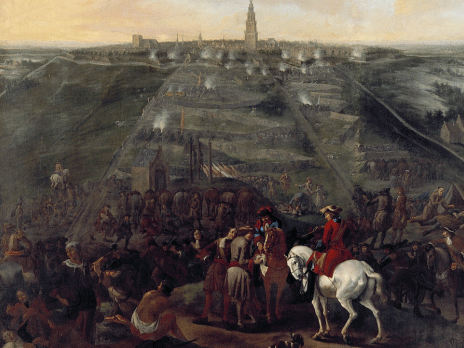Builders find 17th-century cannonball on construction site in Groningen


A 346-year-old cannonball dating from the siege of Groningen has been uncovered by workmen on a building site.
The 40-kilo iron ball was one of thousands fired at the city by the Bishop of Munster, Bernhard van Galen, during a month-long bombardment in 1672. The northern city held out for a month until the bishop ordered his troops to retreat.
His prolific use of cannons earned him the nickname ‘Bommen Berend’ and the city of Groningen holds an annual festival on August 28 to celebrate its resistance to the siege.
The ‘bomb’ was found on Friday buried two metres underground by workers on a construction site on the corner of Nieuweweg and Oostersingel. It is believed to have been aimed at one of the city’s entrance gates.
Bomb disposal unit (EOD) inspectors were called to the site after workers detected a whiff of gunpowder, but concluded that the cannonball was not dangerous.
Local archaeologist Gert Kortekaas said the find on Friday would reveal clues about the kind of munitions used in 17th-century warfare. ‘We know the big picture, but this lets us see the detail. Now we know what these weapons looked like and how they were filled.’
Thank you for donating to DutchNews.nl.
We could not provide the Dutch News service, and keep it free of charge, without the generous support of our readers. Your donations allow us to report on issues you tell us matter, and provide you with a summary of the most important Dutch news each day.
Make a donation